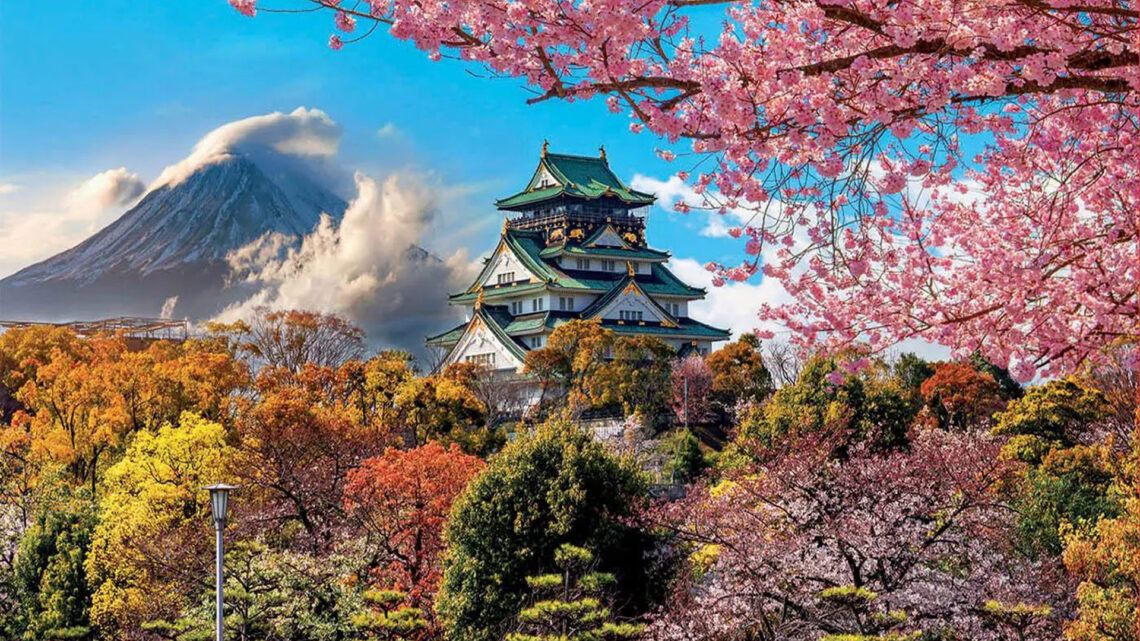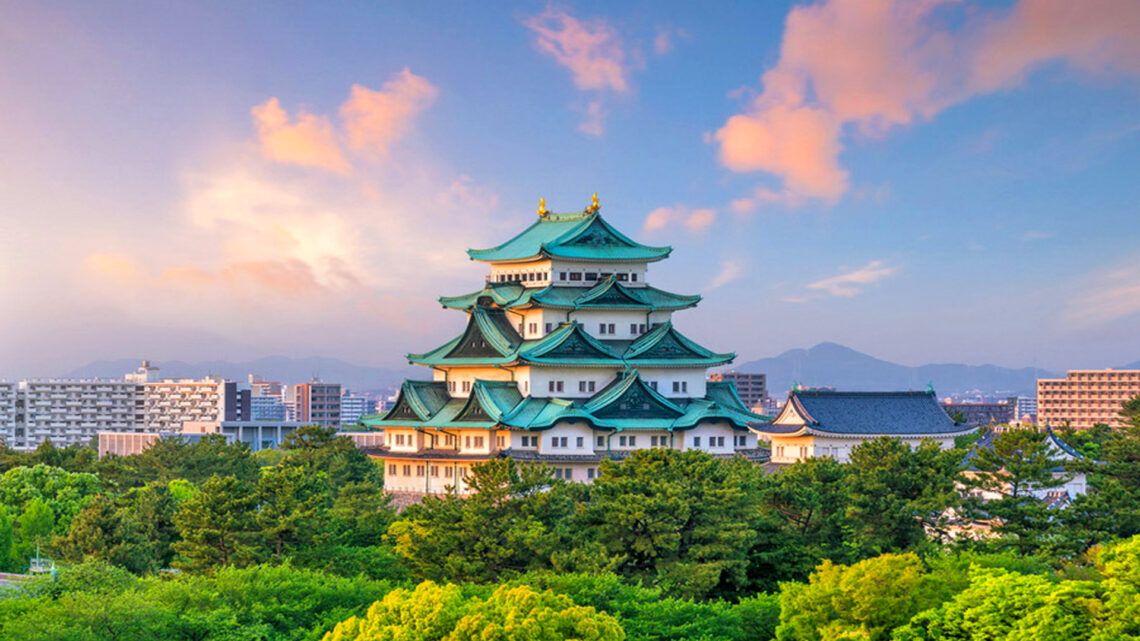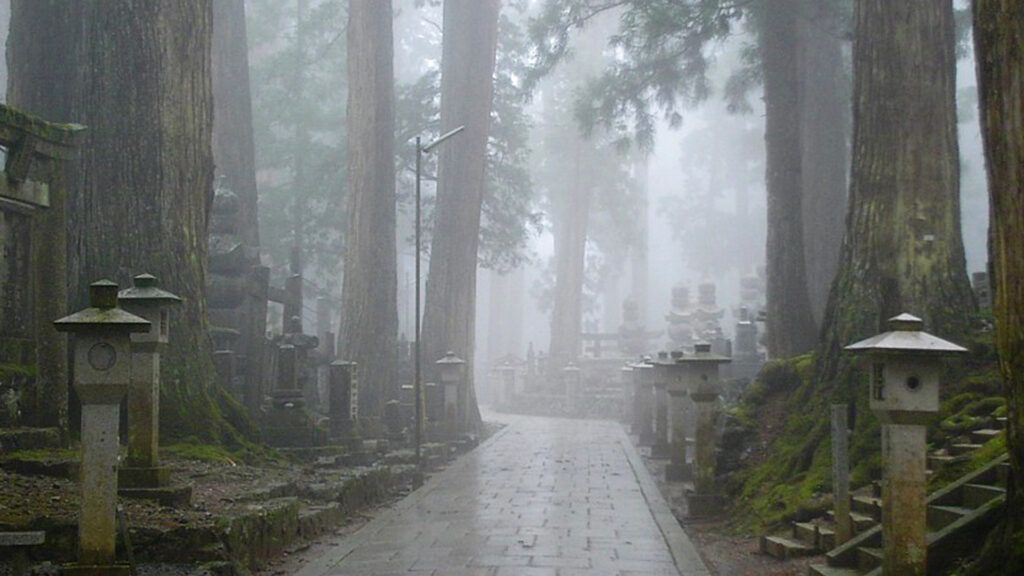
Mount Koya, a sacred mountain in Japan, is renowned for its religious and spiritual significance. Located on this mountain is the Temple of Okunoin, considered one of the most important and holiest sites of Shingon Buddhism. Founded by Kobo Daishi (Kukai), the founder of the Shingon school, this site attracts thousands of pilgrims and tourists from around the world every year. Okunoin Temple is not only a spiritual retreat but also a memorial for countless people who have found their final resting place there. In this article, we delve deep into the history, significance, and architecture of the temple, exploring the myths and legends that make this place so unique.
The history of Okunoin Temple is closely tied to the life of Kobo Daishi, one of Japan’s most renowned Buddhist monks. Kukai, as he is often called in Japanese history, lived in the 8th century and was one of the most influential religious figures of his time. After studying in China, where he gained profound knowledge of esoteric Buddhism, Kukai returned to Japan and founded the Shingon school, which remains one of the most important schools of Japanese Buddhism to this day.
Okunoin Temple is particularly famous because its founder, Kukai, was enshrined here after his death. However, Shingon Buddhism teaches that Kukai did not truly die but entered an eternal state of meditation, waiting for the arrival of the Buddha Miroku (Maitreya). This belief has made Okunoin one of the holiest places in Japan.
The Cemetery of Okunoin
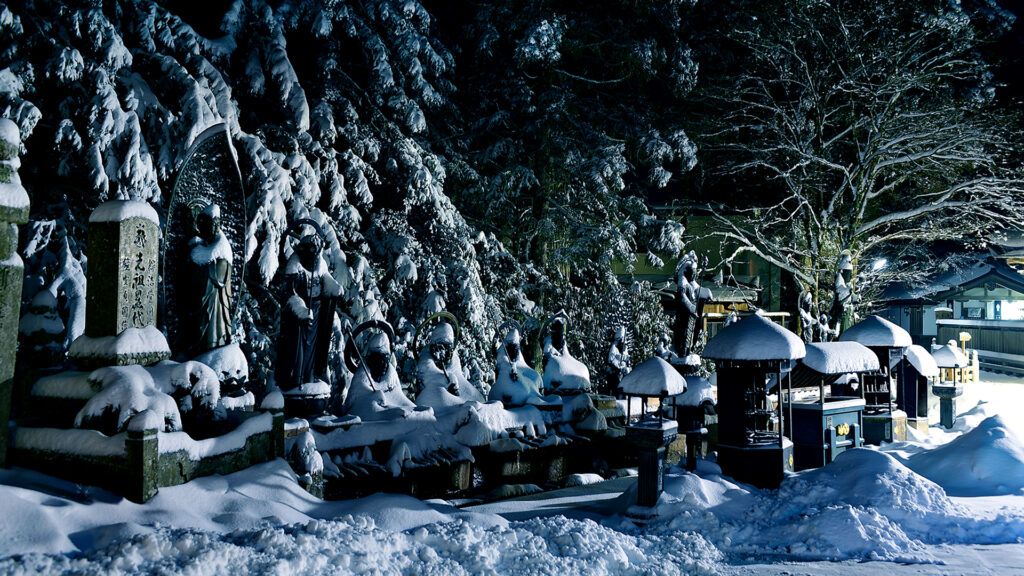
One of the most remarkable features of the Temple of Okunoin is its vast cemetery, the largest in Japan. Over 200,000 tombstones line the paths leading to the mausoleum of Kukai. This cemetery has served as a final resting place for people from all walks of life for centuries, from humble farmers to samurai and nobility. Even famous historical figures, including daimyos (feudal lords) and warriors, have their graves here.
The atmosphere in the cemetery is one of deep reverence. The centuries-old cedar trees lining the entire path to the mausoleum enhance the spiritual and mystical aura of the place. Especially when enveloped in mist, the cemetery feels almost otherworldly, transporting visitors to another realm.
The graves are not only for individuals but also for organizations and companies. It is an old Japanese tradition for companies to have symbolic graves in the cemetery, hoping for spiritual protection and long-lasting success.
The pilgrimage path from the entrance of the temple grounds to the mausoleum holds deep religious and symbolic value. This path, about two kilometers long, is lined with lanterns that create a magical atmosphere, especially at dusk. The lanterns symbolize the light of the Buddha, illuminating the path to enlightenment.
A special feature along the path is the “Bridge of Souls” (Gobyo-bashi). It is said that before crossing the bridge, one should bow and pray to show respect for the souls of the deceased. On the other side of the bridge lies the sacred sanctuary of Okunoin, where Kobo Daishi’s mausoleum is located. Here, believers offer prayers, hoping to be blessed by the spiritual powers of the great master.
The Hall of Lanterns (Toro-do)
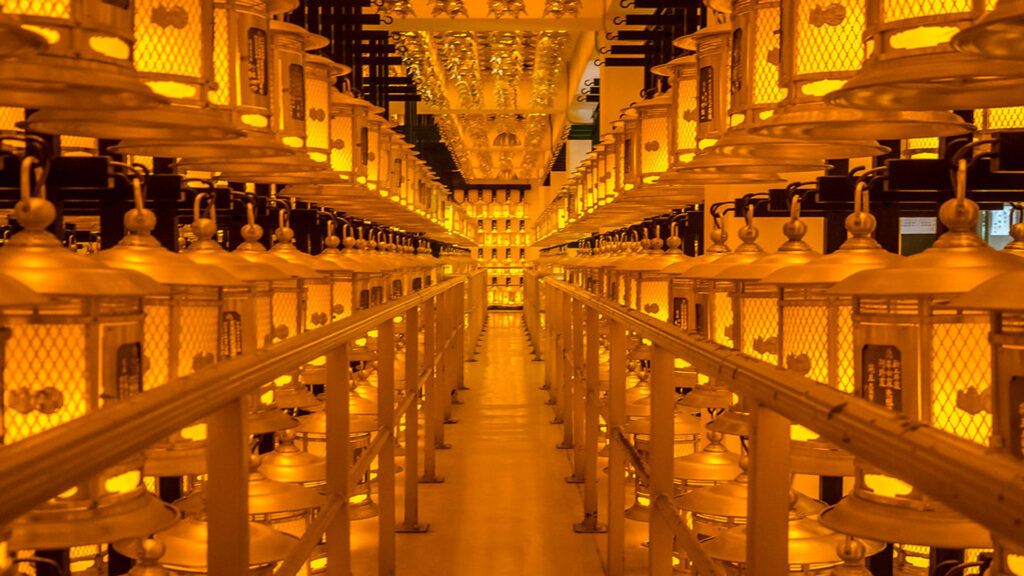
One of the most fascinating buildings in the temple complex is the Hall of Lanterns (Toro-do). In this hall, countless lanterns burn, all of which have been donated by devotees. Some of these lanterns are said to have been burning continuously for hundreds of years. The eternal lights in the Hall of Lanterns symbolize the light of compassion and wisdom, central to Buddhist teachings.
A particular legend surrounds two of these lanterns, known as the “eternal lanterns.” One of these lanterns is said to have been donated by an emperor, while the other was donated by a poor woman who sold all her possessions to offer a lantern. Both lanterns continue to burn today, symbolizing the equality of all people in the eyes of the Buddha.
In Shingon Buddhism, Okunoin is not only a place of remembrance but also a spiritual center for meditation and enlightenment. Shingon Buddhists believe in attaining enlightenment in this lifetime and see the temple as a place where the teachings of esoteric Buddhism can be practiced in their purest form.
An important aspect of Shingon Buddhism is the concept of mandalas, symbolic representations of the universe. In the rituals of Okunoin Temple, the mandala plays a central role. It represents the cosmic order and the various aspects of the Buddha, venerated in esoteric teachings. Through meditation and rituals, believers seek to connect with these cosmic forces and attain enlightenment.
Pilgrimages to Okunoin

Okunoin is the destination for numerous pilgrims who travel from various parts of Japan and the world. For many pilgrims, visiting the temple is the highlight of a journey along the Koyasan pilgrimage route, which connects various sacred sites in the region.
Pilgrims often wear traditional white robes, symbolizing the purity and spiritual preparation required for a pilgrimage. Many perform rituals such as striking gongs, lighting incense, and offering gifts to show their respect for Kukai and the Buddhist teachings.
Like many ancient temple sites, Okunoin is steeped in myths and legends. One of the most famous legends tells that after his death, Kobo Daishi did not truly die but remains in deep meditation. It is believed that he still resides in the temple, waiting for the return of the future Buddha, Miroku. Each year, a priest enters the innermost part of the mausoleum to symbolically offer food to Kobo Daishi — a ritual that signifies the master’s continuing presence.
Another legend tells of a samurai who sought refuge in Okunoin Temple during the civil war in Japan in the 16th century. It is said that he was saved from his enemies through the spiritual power of the temple. These stories contribute to the temple’s continued reputation as a place of spiritual protection.
The Surroundings and Activities
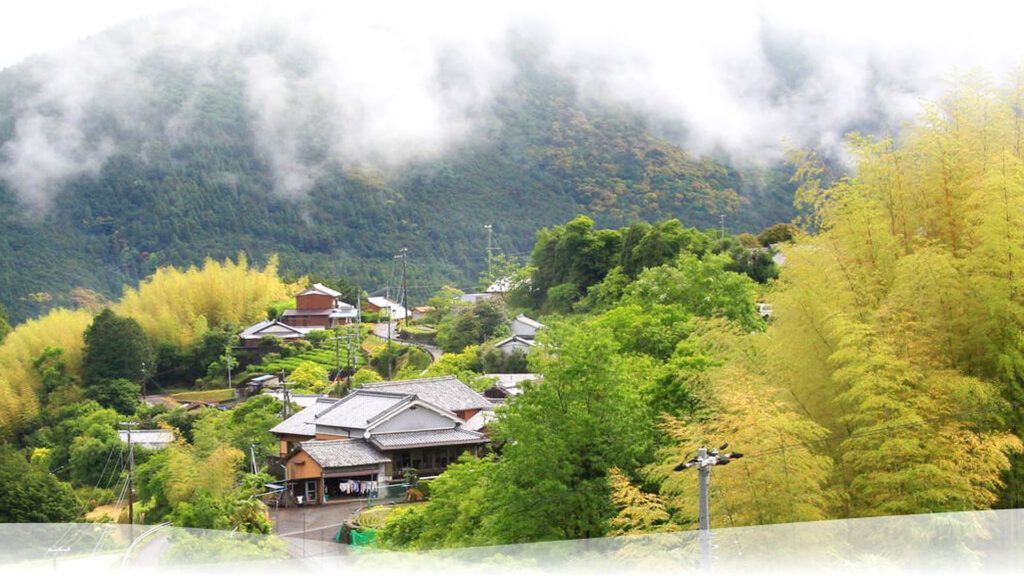
Beyond the temple itself, the surroundings of Okunoin are breathtakingly beautiful. The pristine nature that envelops the temple is an essential part of the spiritual experience. The majestic cedar trees, some of which are over a thousand years old, give the landscape an almost mythical quality. In autumn, when the leaves turn vibrant colors, the area around Okunoin becomes a popular destination for nature lovers and photographers.
The area surrounding Okunoin Temple and Mount Koya is rich in natural beauty and cultural attractions that captivate visitors. Koyasan, as Mount Koya is often called, is located in Wakayama Prefecture and is surrounded by a dense network of mountains, forests, and ancient pilgrimage routes. This peaceful landscape, combined with the spiritual atmosphere of the place, invites visitors to connect with nature, find tranquility, and experience deep inner reflection.
Mount Koya is part of the Kii Peninsula mountain range, which has been recognized as a UNESCO World Heritage Site. The region is characterized by untouched forests and a rich variety of plants and animals. Particularly notable are the centuries-old cedar and cypress trees found around Okunoin Temple. Many of these trees have witnessed the long history of the temple, creating a serene, almost sacred atmosphere.
In spring and autumn, nature shows its most beautiful side. In spring, cherry blossoms and wildflowers bloom, giving the place a peaceful and colorful mood. Autumn, known for “Koyo”—the changing colors of the leaves—transforms the forests around Koyasan into a radiant mosaic of red, gold, and orange. Hiking through the forests during these seasons is especially popular, offering stunning views of the surrounding mountain landscape.
For nature lovers and spiritual seekers, the area around Okunoin offers numerous hiking and pilgrimage routes. One of the most famous is the Koyasan Choishi Michi, a pilgrimage trail that runs from the base of the mountain to Okunoin Temple. This ancient pilgrimage path stretches for about 24 kilometers and is marked by over 200 stone markers (Choishi) that guide the way to the temple. The route is both historically significant and scenically beautiful, taking hikers through forests, over hills, and past old shrines and temples.
The hike along the Koyasan Choishi Michi allows pilgrims and hikers to experience the spiritual journey of traditional pilgrimage. The path symbolizes the road to enlightenment, and many pilgrims walk the trail in white clothing to signify their inner purification.
For less experienced hikers or those who prefer shorter routes, there are also shorter trails around the temple that allow visitors to enjoy the beauty of nature without completing the entire pilgrimage.
The peaceful surroundings of Koyasan and the spiritual energy radiating from Okunoin Temple and the nearby shrines make the mountain an ideal place for meditation and spiritual retreats. Many visitors take advantage of their stay to participate in meditation sessions or spiritual ceremonies led by monks of the Shingon school.
Various temples on Koyasan offer accommodations in Shukubo, a temple lodging. This provides a unique opportunity to deeply immerse oneself in the Buddhist way of life, participate in morning prayers, and enjoy a simple but traditional vegetarian meal (Shojin Ryori). The Shukubo experience gives visitors insight into monastic life and encourages inner reflection and peace.
Meditation in the temple or outdoors, surrounded by the serene forests, is a popular activity. Some temples also offer special courses that teach the techniques of esotericism and meditation of Shingon Buddhism.
In addition to Okunoin Temple, there are many other significant temples and shrines to explore on Mount Koya. One of the most well-known is the Kongobuji Temple, the main temple of Shingon Buddhism on Mount Koya. This magnificent temple is an architectural masterpiece and is home to some of Japan’s most impressive traditional gardens.
The Danjo Garan complex is another important temple site, deeply connected to the history and teachings of Kobo Daishi. This sacred complex includes several buildings, including the famous Konpon Daito Pagoda, which is considered the symbolic center of Shingon Buddhism. The harmonious architecture and spiritual significance of this place make it a must-see for any visitor.
The Koyasan region offers not only spiritual activities but also opportunities for physical relaxation. Nearby, there are several onsen (hot springs) where visitors can unwind after a long day of exploration or meditation. Hot springs are deeply ingrained in Japanese culture and are considered places of physical and spiritual cleansing. A bath in an onsen offers the perfect opportunity to recover from the stresses of daily life and immerse oneself in the tranquil atmosphere of nature.
Some of the onsen also offer views of the surrounding mountains and forests, making the bathing experience even more impressive. Especially during the cooler months, a soak in the onsen is a wonderful experience.
Throughout the year, various cultural events and religious festivals take place on Koyasan, making the temple a vibrant center of Buddhist culture. One of the most important festivals is the O-Bon Festival in August, during which lanterns are placed along the path to Okunoin Temple to honor the deceased. The ceremony, where countless lanterns are lit, is a moving and deeply spiritual experience that symbolizes the close connection between the living and the dead.
Another important event is the Aki no Mine Matsuri in autumn, a temple festival that honors Kobo Daishi. On this occasion, special rituals and ceremonies take place, and the temple grounds are festively decorated. Visitors have the opportunity to participate in these ceremonies and gain insight into the rich tradition of Shingon Buddhism.
The surroundings of Okunoin Temple and Koyasan offer a unique blend of nature, culture, and spiritual depth. Visitors can enjoy meditative walks through ancient forests, explore centuries-old temples, and take part in Buddhist ceremonies. Whether one is seeking inner peace, wanting to deepen their understanding of Shingon Buddhism, or simply enjoy the stunning landscape, Koyasan is a unique destination that offers a deep connection between humanity, nature, and spirituality.
A stay on Mount Koya and at Okunoin Temple is not only a journey into the history and culture of Japan but also an opportunity to find inner peace and spiritual fulfillment.
Getting to Mount Koya and Okunoin Temple
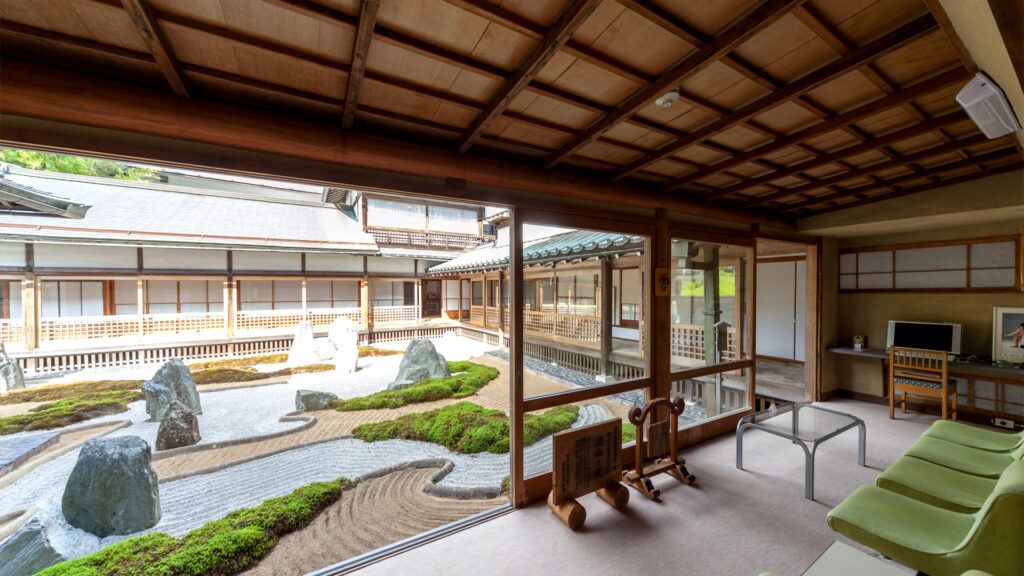
Reaching Koyasan and Okunoin Temple is well-organized, despite the mountain being in a remote region. Many consider the journey itself an integral part of the spiritual experience, serving as a kind of preparation for the tranquility and enlightenment that the mountain exudes.
By Train and Bus
The most convenient and popular way to reach Koyasan is by combining train and bus travel. The main station for accessing Koyasan is Namba Station in Osaka. From there, the Nankai Koya Line runs directly to Gokurakubashi Station, the last stop before ascending the mountain. The journey takes about 90 minutes and offers breathtaking views of the surrounding landscapes, especially as you approach the mountains.
Upon arriving at Gokurakubashi Station, a cable car ascends further up the mountain. The ride is short but exhilarating, bringing visitors to the Koyasan Station, the highest point of the route, in just a few minutes. From there, regular buses connect to various stops in the Koyasan area, including Okunoin Temple and other significant temple complexes like Kongobuji and Danjo Garan. It’s advisable to purchase a day pass for the bus at Koyasan Station to travel flexibly between the sights.
By Car
For those who prefer a flexible journey, driving to Koyasan is also an option. The road leading up to Koyasan is well-maintained and winds through picturesque mountain landscapes. However, it’s important to note that the roads can be narrow and winding, particularly in the final sections, which can make driving challenging. Especially in winter, when snow can fall, reaching Koyasan by car can be difficult.
There are parking facilities near the temple area, but space is limited, and finding a parking spot during peak season or holidays can be challenging. Therefore, using public transportation is often recommended to avoid stress and potential delays.
Accommodations on Koyasan
Staying on Koyasan offers a unique opportunity to deeply immerse oneself in Buddhist culture and spirituality. Especially appealing are the Shukubo, temple lodgings that allow visitors to stay overnight in a Buddhist temple and participate in religious activities. The Shukubo experience is not just a practical accommodation option but also a spiritual journey in itself.
Shukubo (Temple Lodgings)
More than 50 temples on Koyasan offer Shukubo accommodations for guests. Most of these temples provide a tranquil, traditional Japanese atmosphere, complete with tatami mats, futons, and simple yet elegant rooms. The temples allow guests to participate in the morning prayers and ceremonies of the monks, offering a special experience for those wishing to connect more closely with Buddhist practices.
An important aspect of the Shukubo experience is the meal. Temples typically serve Shojin Ryori, the traditional Buddhist vegetarian cuisine. These meals are not only healthy and delicious but also adhere to the principles of compassion towards all living beings, which are central to Buddhism. Dishes are often prepared from local, seasonal ingredients, providing an excellent opportunity to taste the simple yet refined cuisine of Buddhist monks.
Popular Temple Lodgings
Eko-in: One of the most well-known temples for Shukubo, Eko-in offers comfortable accommodations and the opportunity to participate in meditations and spiritual ceremonies. Guests can also take a night walk through the Okunoin cemetery, accompanied by a monk who explains the history and spirituality of the place.
Fudo-in: This temple is somewhat off the main tourist paths and offers a quieter, more secluded atmosphere. It is particularly renowned for its beautiful garden and excellent Shojin Ryori.
Rengejo-in: This temple is known for its welcoming atmosphere and special care for guests. In addition to morning prayers, visitors can participate in workshops on Buddhist practices such as copying sutras.
Hotels and Ryokan
In addition to temple lodgings, Koyasan also has some traditional inns (ryokan) and modern hotels that offer more comfortable, Western-style accommodations. These are a good option for travelers who may not be seeking the spiritual temple atmosphere but still wish to enjoy the beauty and tranquility of Koyasan.
Koyasan Onsen Fukuchiin: This ryokan offers not only traditional Japanese rooms but also access to an onsen (hot spring), which can be particularly relaxing after a day of exploration. The onsen area provides views of a peaceful, well-maintained Japanese garden, inviting meditation and relaxation.
Henjosonin: Another ryokan that offers both traditional rooms and comfortable amenities. It is located near the Danjo Garan complex, making it an ideal starting point for exploration.
Practical Tips for Staying in Temples
Punctuality: Temple lodgings maintain a strict daily schedule. Morning prayers often begin very early, and guests are expected to arrive on time. Participation in the prayers is generally optional.
Quiet and Respect: Temples are spiritual places, so a quiet and respectful atmosphere is expected. This means avoiding loud noises and conversations, especially at night.
Simple Amenities: Rooms in Shukubo are simple but clean and comfortable. However, don’t expect luxury, as the experience is more focused on spiritual reflection than material comfort.
Getting to Koyasan and choosing accommodations are essential components of the spiritual journey to this sacred mountain. Whether opting for a traditional temple lodging that offers deep insights into Buddhist daily life or a more comfortable ryokan or hotel, each option provides unique experiences. Koyasan is not only a place of historical and cultural significance but also a retreat that allows one to escape the hectic pace of everyday life and find inner peace.
My Conclusion

Okunoin Temple on Mount Koya is much more than just a religious site. It symbolizes Japan’s deeply rooted spiritual traditions and serves as a place of meditation, remembrance, and enlightenment. The combination of profound historical significance, architectural beauty, and spiritual power makes Okunoin a unique destination for pilgrims and travelers. Those who visit the temple immerse themselves in a world where the boundaries between this life and the next blur, and where the teachings of Buddhism come alive.
Koyasan and Okunoin Temple are far more than just historical landmarks; they are places of deep spirituality where nature and Buddhist tradition harmoniously intertwine. The peaceful atmosphere and the opportunity to stay overnight in a temple offer a rare chance not only to enjoy the stunning landscape but also to immerse oneself in the centuries-old practices of Shingon Buddhism. The journey may seem a bit arduous, but the path to the mountain is part of the experience, rewarding every visitor with an unparalleled sense of tranquility, reflection, and inner peace. Please keep this in mind when planning a visit.
Thank you,
Hermann Candahashi


